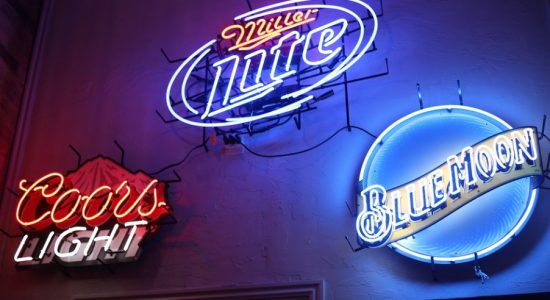Ginger Beer » Everything About Ginger Beer & How it’s Made
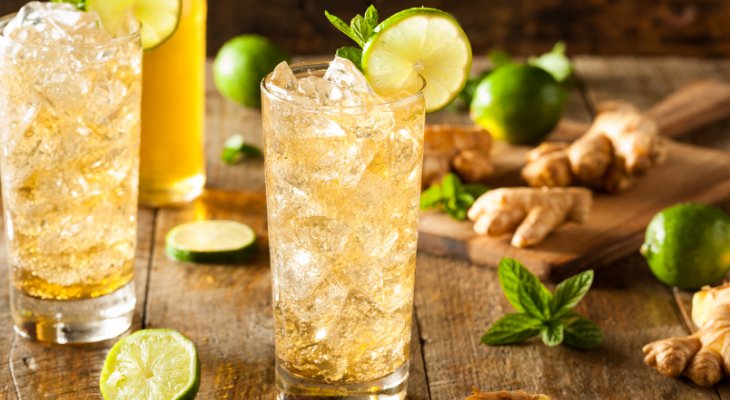
You might have heard the name before, but maybe aren’t quite sure what ginger beer really stands for? Well, I don’t blame you, but I am here to help you understand what it is and how it’s made. Simply everything about ginger beer.
What is Ginger beer? Ginger beer, as we know it today, is usually a non-alcoholic beverage with a spicy taste from the ginger. But, back in the days ginger beer was an alcoholic beverage. Ginger beer is made from a blend of ginger, water, and sugar that’s fermented with yeast, then carbonated and bottled.
Does this sound interesting for you? Keep reading, as I will take you through everything about ginger beer, and how it’s made.
Read Also: Best Beer Recipe Kits
What Exactly Is Ginger Beer?
The traditional ginger beer we know is a sweetened, carbonated, usually non-alcoholic beverage. This Ginger beer is produced by natural fermentation of prepared ginger spice, yeast, and sugar.
This became a success in Britain and its colonies from the 1800th century. But, this is not where it originates from. It origins from the colonial spice trade with the Orient and the sugar-producing islands of the Caribbean.
Besides this spice, other spices were added to the ginger beer as well. But, the alcohol level did not cross 2% because of excise tax laws in 1855. Today, a few breweries have maintained the alcoholic ginger beer.
Currently, ginger beer is more often manufactured than brewed, and with flavor and color additives. Ginger ale, on the other hand, is not brewed.
Ginger beer is still brewed by many homebrewers. This is done by a symbolic colony of yeast and Lactobacillus (a bacteria) know as a ‘’ginger beer plant’’.
But where does ginger beer comes from?
Ginger has been popular since forever. Maybe that’s an exaggeration, but we are talking 500 BC, where ginger was used in medicine and as a flavoring food in Ancient China and India.
During the Victorian era, ginger was also used to brew an alcoholic beverage called ‘’ginger beer’’. This will mean, that this ginger beer originated in Yorkshire in England in the mid-18th century. Herefrom it became popular in the United States, Ireland, Canada, and South Africa.
The British army brought the beverage to the Ionian Island in the 19th century. Today, it is still made as a local specialty known as tsitsibíra by villagers in rural Corfu.

Ginger beer plant
This ginger beer plant is shortened GBP and is also known as; bees wine, Palestinian bees, Californian bees, and balm of Gilead. Yes, a rose by any other name would smell as sweet.
But, this is not something you would consider a normal plant. It’s more like organisms that consist of the yeast Saccharomyces florentinus and the bacterium Lactobacillus hilgardii. These two forms a symbiotic culture of bacteria and yeast. This is called SCOBY.
It will convert a gelatinous substance that is more easily transferred from one fermenting substance to the next. This is pretty smart, but when was it invented, and by who, you might ask? The answer is Harry Marshall Ward. He was the first do describe GBP in 1892.
Originally ginger beer is brewed by leaving water, sugar, ginger, optional spices (such as lemon juice), and GBP to ferment for days. This is done to convert a part of the sugar into alcohol.
The origins of the original ginger beer plant are unknown in the UK. When ginger beer was made using som GBP, the jelly-like residue was bottled and became the new GBP.
Some of the GBP was used to the next ginger beer batch, and some were given to friends and family. In this way, the GBP was passed on through generations.
Ginger beer plant can be made by fermenting a mixture of water, yeast (brewer’s or baker’s), ginger, and sugar. This mixture will be stored for at least a week, with sugar regularly added to increase the alcohol content.
It’s also possible to add more ginger. After fermenting, the concentrated mix is strained, diluted with water and lemon juice, and then bottled.
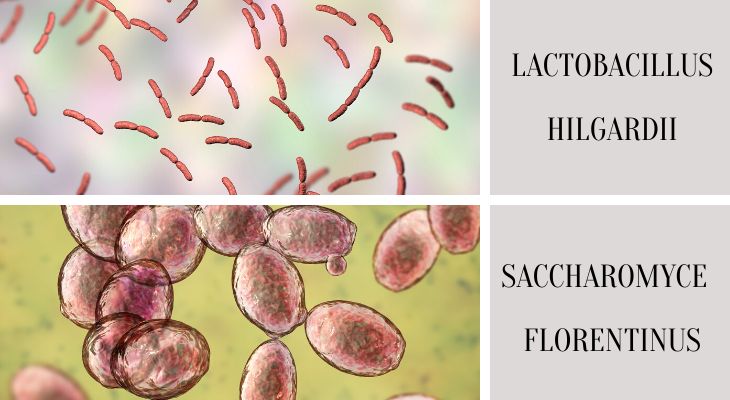
Is Ginger Beer Alcoholic?
Back in the days, when ginger beer became popular, it was an alcoholic drink. The final product had a small alcohol content of no more than 11 percent.
Only a few breweries make the ginger beer alcoholic. Most ginger beers are non-alcoholic today. This means, that ginger beer today are categorized as non-alcoholic drinks.
The reason is that their alcohol content is usually under 0.5 percent, which meets the FDA requirements. The FDA (The Food and Drug Administration) is a federal agency of the United States Department of Health and Human Services.
How to brew your own alcohol? Take a look at this post where we get all the details about making alcohol at home.
How is Ginger beer made?
There are a lot of different recipes on how to make ginger beer. But basically, ginger beer is made roughly by the same procedure as regular beer. By that, I mean that ginger beer ferment as well.
In the following, I will give you my best recipe on how to make ginger beer, which is actually pretty simple. However, this is a recipe without the yeast.
Ingredients
You will be surprised about how few ingredients you’ll need for this. The only ingredients you’ll need is:
- 1,8 ounces of ginger (fresh ginger + a little extra for your ginger-starter)
- 3,5 ounces of sugar (+ a little extra for your ginger-starter)
- 2 liter of water
This is all you will be needing for brewing your own ginger beer, are you ready?
Procedure
Start by finding a small container and a 2-liter container for your fermenting.
Ginger-starter: Wash your fresh ginger and peel a bit into the small container. Add a little bit of water and one teaspoon of sugar. Close the container and store it at room temperature around 2-3 days.
Each day, add a teaspoon sugar and a bit of water until the liquid starts to bubble. When the ginger-starter begins to bubble, it’s time to make the ginger decoction. This will become the ginger beer later on.
You shall first add the ginger-starter when the decoction is done.
Ginger decoction: start by pouring 1 liter of water in a big pot and add 1,8 ounces of fresh ginger with peel and bring to boil at a high temperature. Put on the lit, turn down the temperature, and let it simmer for around 20 minutes.
Take the pot off the heat and pour the hot decoction through a fine masked strainer into a big bowl. Discard the ginger leftovers from the strainer.
Immediately add 3,5 ounces of sugar while the decoction is still hot, and stir until it’s all dissolved. Now, add another liter of cool water, which will cool down the decoction.
When the decoction has reached room temperature, pour it into the big container and add the ginger-starter. Cover the opening of the container with a cheesecloth or a coffee filter and fasten it with a rubber band or a cord.
Let the ginger beer ferment in 1 to 3 days, ideally around 18°C to 20°C (64°F to 68°F) without sunlight. Is the temperature higher, it will ferment faster, is the temperature lower, it will ferment slower.
Bottling: After 1 to 3 days it will start to bubble. When you see the first bubble on the surface of the container, use a funnel to pour your ginger beer on bottles.
Make sure to pour a bit of the ginger beer in a plastic bottle to keep an eye on and feel the pressure that is build up inside the bottles.
Leave the bottles to carbonate around room temperature in 1 to 2 days. Afterward, they are refrigerated. Be aware that the ginger bee can be over-carbonated. This means that you have to put all the bottles into the refrigerator before the plastic bottle begins to swell up.
Your ginger beer continues to form carbonic acid in the fridge, so it’s best if you drink it within 2 to 3 weeks after it’s bottled.
Note
The taste and the strength can variate a lot when it comes to ginger, depending on the season, sort and culture. Some like their ginger more concentrated than others, so try your way before starting your brewing. Then you can always adjust the recipe.
You can also add spices as lemon juice, or other.
If you want to keep your ginger-starter fresh for your next batch, you can just pour a bit of the original ginger-starter and add some more water and sugar.
This is just one way to do it, I hope you enjoyed.
If you are more interested in homebrewing, try out this post: What Is The Best Home Brewing Kit For Beginners?
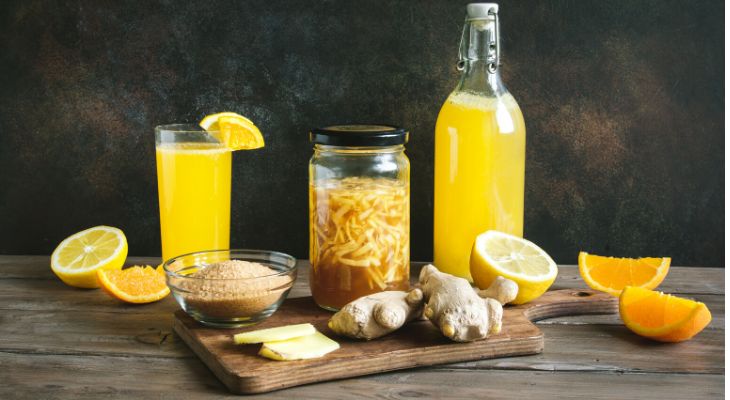
Is Ginger Beer Good For You?
I can’t tell you if ginger beer is good for you. I know that it’s not bad for you, but if it’s actually good for you, I’m not sure. I mean, after all, there is relatively much sugar in ginger beer.
That said, ginger is good for you, that’s a fact. Here are 9 proven health benefits of ginger, from Healthline.com
- Ginger contains gingerol, a substance with powerful medicinal properties
As mentioned above, ginger originates from China and is a flowering plant. It belongs to the Zingiberaceae family and is closely related to turmeric, cardamom, and galangal.It has a long history of use in both alternative and traditional medicine. To name a few, it has been used to help digestion, reduce nausea and helped fight the flu and common cold.
Ginger contains a large amount of gingerol, which is the main bioactive compound in ginger. This is responsible for much of its medicinal properties. It has powerful anti-inflammatory and antioxidant effects. - Ginger may reduce muscle pain and soreness
Ginger appears to be effective at reducing the day-to-day progression of muscle pain and may reduce exercise-induced muscle soreness. That said, it has no immediate impact.These effects are believed to be mediated by anti-inflammatory properties. - Ginger can treat many forms of nausea, especially morning sickness.
It has a long history of use as a sea sickness remedy, and there is some evidence that it may be as effective as prescription medication.Although ginger is considered safe, talk to your doctor before taking large amounts if you are pregnant.
1-1.5 grams of ginger can help prevent various types of nausea. This applies to seasickness, chemotherapy-related nausea, nausea after surgery and morning sickness. - The anti-inflammatory effects can help with osteoarthritis
Osteoarthritis involves degeneration of the joints in the body, leading to symptoms like joint pain and stiffness.A controlled trial showed that people with osteoarthritis of the knee, those who took ginger extract had less pain and required less pain medication.There are some studies showing ginger to be effective at reducing symptoms of osteoarthritis, which is a very common health problem.
- Ginger may drastically lower blood sugars and improve heart disease risk factors
Ginger may have anti-diabetic properties. A recent study showed that people with type 2 diabetes who took 2 grams of ginger powder per day lowered fasting blood sugar by 12%.However, keep in mind that this is just one small study. The results are incredibly impressive, but they need to be confirmed in larger studies before any recommendations can be made. - Ginger can help treat chronic indigestion
Chronic indigestion (dyspepsia) is characterized by recurrent pain and discomfort in the upper part of the stomach.Ginger appears to speed up emptying of the stomach, which can be beneficial for people with indigestion and related stomach discomfort. - Ginger powder may significantly reduce menstrual pain
Menstrual pain (dysmenorrhea) refers to pain felt during a woman’s menstrual cycle.In a study, Ginger managed to reduce pain as effectively as the drugs mefenamic acid and ibuprofen. - Ginger may lower cholesterol levels
High levels of LDL lipoproteins (the “bad” cholesterol) are linked to an increased risk of heart disease. The foods you eat can have a strong influence on LDL levels.There is some evidence, in both animals and humans, that ginger can lead to significant reductions in LDL cholesterol and blood triglyceride levels. - The active ingredient in ginger can help fight infections
Gingerol, the bioactive substance in fresh ginger, can help lower the risk of infections. In fact, ginger extract can inhibit the growth of many different types of bacteria.It is very effective against the oral bacteria linked to inflammatory diseases in the gums, such as gingivitis and periodontitis.Fresh ginger may also be effective against the RSV virus, a common cause of respiratory infections.
With this said, I think it’s all right to conclude, that ginger is good for you. But is ginger beer good for you? I mean, everything in moderation, and you’ll be good to go. But, it does contain a lot of sugar, so keep that in mind.
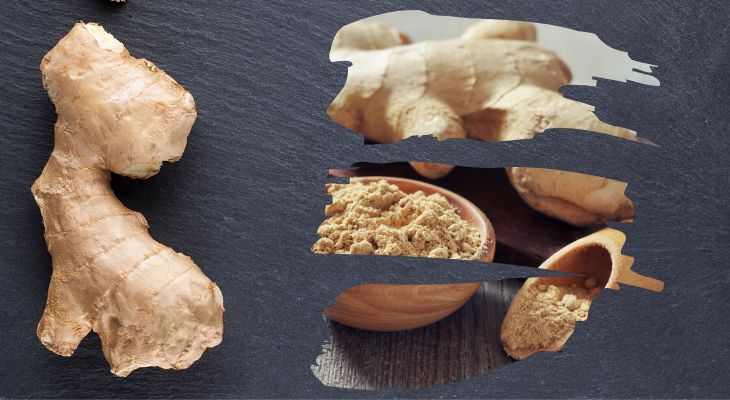
Is Ginger Beer a Soda?
The short answer is no, ginger beer is a not soda, just a kind of.
Back in the days, it wasn’t considered a soda. Back then it was an alcoholic drink, but today only a few breweries make alcoholic ginger beers.
Therefore, the non-alcoholic ginger beer we know today is like soda, without being it, because of the way it’s brewed.
A ginger ale, on the other hand, can be called a soda. Ginger ale is a carbonated soda-type beverage made primarily from water and ginger. Many ginger ales also contain added sugar, just like soda and ginger beer.
Ginger beer, on the other hand, is a brewed and fermented beverage that has a stronger ginger flavor than ginger ale.
What is The Best Ginger Beer?
There are hundreds of different ginger beers, and it can be difficult to make a favorite. Because they’re all pretty good, right. Although I have made my own top 10 list over my favorite non-alcoholic ginger beers.
This top ten gives you the ginger beers that are so good you will not have to mix it with liquor. Let’s take them from the bottom to the top.
#10 Americana Ginger Beer
This is actually a pretty good one.
Handcrafted and part of Ocra Beverage’s retro line. This comes with pure cane sugar, which gives it a different flavor.
All in all, it has this old-fashion taste, which it’s meant to.
#9 Zevia Mixer Ginger Beer
This is a sugar-free beer. Most sugar-free ginger beers leave a to desire because of the alternative sweeteners tend to fight the ginger. But not this one.
This ginger beer is a good choice of a ginger beer if you would like to leave the sugar behind.
#8 Squamscot Ginger Beer
Here we have another old-school ginger beer, also brewed with cane sugar. This is particularly good with rum but is also delicious as it is.
#7 Reed’s Extra Ginger Brew
This one is made with raw cane sugar and honey and includes pineapple, lemon, and lime juice as well.
#6 Maine Root Spicy Ginger Brew
This label just screams organic, don’t you think? And that’s just what it is, organic.
Main Root is made with fair trade organic sugar cane juice and has an unmistakable spice. It comes with a slight sweetness and its bubbles bring it all together. All in all a genius ginger beer, if you ask me.
#5 Brooklyn Crafted Ginger Beers
This fella is made with pure cane sugar, fresh ginger, and organic extract. Also, this one is unfiltered, so you can easily find pieces of ginger floating in the bottle.
#4 Q Ginger Beer
This is a tricky little thing. It’s sweetened with organic agave nectar, and if you love spice, you’ll definitely like the chili peppers, coriander, and cardamom that accent the real ginger. Last, but not least, there is also a hint of lime and extra carbonation.
#3 Barrits Bermuda Ginger Beer
This is almost a must for your dark and stormy recipe.
It’s made with high fructose corn syrup, so there’s a sweetness reminiscent of mass-marketed sodas. The ginger isn’t overpowering and it has a great fizz that almost anyone will enjoy.
#2 Bundaberg Ginger Beer
I absolutely love this sophisticated ginger beer.
The recipe uses cane sugar and real ginger, offering the perfect balance of sweet and spice with a warm foamy fizz reminiscent of dark beers.
#1 Fever-Tree Ginger Beer
And here we finally have it, the absolute best of the best, if you ask me. It’s just genius.
It’s made of three types of ginger from Cochin, India, Ivory Coast, and Nigeria, giving it a depth that is not found anywhere else. It’s warm and spicy, not too sweet, and very refreshing, thanks to the carbonated spring water.

Here you go. My top 10 list of best ginger beers. But keep in mind that this is a personal ranking -your ranking might be quite different.
How Long Does Opened Ginger Beer Last?
I don’t think there is a rule for how long an opened ginger beer can last. But, some actions make the ginger beer last longer when opened.
Ginger beer is just like other soft, carbonated drinks. Once you open it, the gas will start to disappear. If you store it in an airtight or tightly closed bottle, it will last around 2-4 days in the refrigerator.
Also, if your ginger beer bottles or cans are stored properly, they can easily be drunk after the expiration date. This is if they are not opened.
Also read: Beer Kits Expiration?
What Is The Difference Between Ginger Ale and Ginger Beer?
This is an excellent question, and I totally understand the doubt.
Both ginger ale and ginger beer are carbonated, non-alcoholic, and boast ginger flavor. The difference is that true ginger beer has been fermented with yeast, unlike a simply carbonated ginger ale.
Both of them make great mixers. However, the concentrated flavor in ginger beer gives the drink more noticeable ginger flavor immediately.
Another difference is also, that the ginger beer originally was an alcoholic drink, thereby the name.
Which Is Better Ginger Ale or Ginger Beer?
Now we know what the difference between ginger ale and ginger beer is, but which one is better? And the answer is whatever you like the best.
Most people prefer ginger beer in drinks, because of its concentrated flavor. While others prefer to drink the ale without liquor in. But again, this is very different from person to person.
If you ask me, I would prefer the ginger beer because of the concentrated ginger flavor and the carbonation content.




